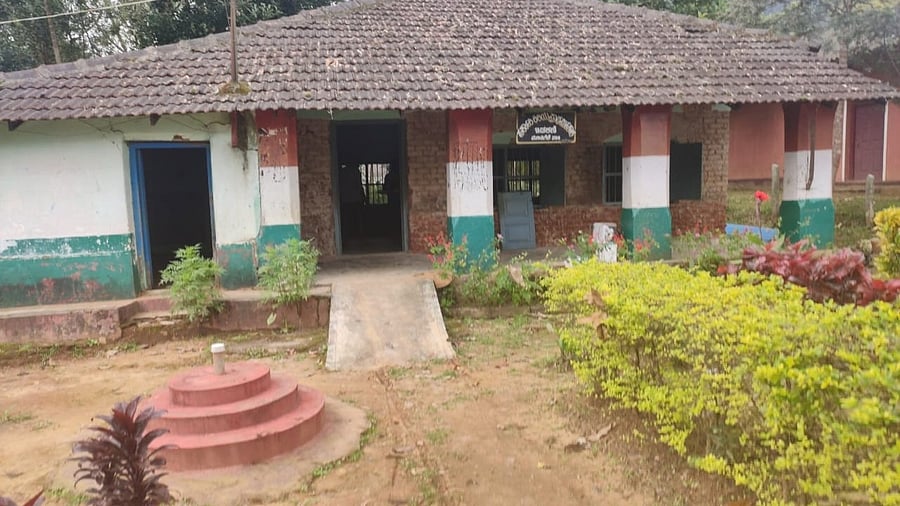
Credit: DH Photo
According to Kiran Kumar, assistant teacher of the government high school in Kottigehara, Chikkamagaluru district, the school had just four classrooms in 2020. Only 40 students were admitted for classes 8, 9, and 10 that year. “The school lacked proper infrastructure. The students did not have learning and sports equipment, resulting in fewer admissions,” he says.
Fast forward to 2022, the school witnessed 85 new admissions. “The school has witnessed a drastic improvement in a few years. Along with the increase in number of admissions, there is a drastic reduction in the student dropout rate. More parents are looking forward to getting their wards admitted to our school,” adds Kiran.
The high school in Kottigehara was not alone in terms of poor infrastructure, low student-teacher ratios and admission rates in the district. “There were several schools in and around Mudigere taluk, which had either no teachers or just a single teacher,” says Madhusudan, a teacher at Herike village government school.
In 2019, Madhusudan was deputed to the Idakani government lower primary school, which was badly affected by the flood. Over 50 years old, the government primary school lacked basic amenities and was extremely dilapidated.
This was when the teacher came across the work of a local NGO on social media and enlisted their help. When the team visited Mudigere for flood relief work, he approached them to revive the Idakani school.
“Volunteers provided the school with modern equipment, school bags, sanitation, water purifiers, fans, tube lights, smart TVs, CCTVs and stationery,” says Madhusudan. “The Idakani school, which was on the verge of closure, has been revamped. As a result, we have witnessed a surge in admissions,” he adds.
The school now has smart classrooms, functional toilets, walls with colourful paintings, science lab equipment, repaired benches and libraries.
A few children from these schools have also been given scholarships. In 2020, Swaroop passed Class 10 with an overall mark of 86.3%. “Since I was a topper, I was awarded a scholarship and was encouraged to pursue the science stream,” says Swaroop.
Raghu, a parent at Idakani, feels that the best facilities are now available to children attending government schools in rural locations. “Students have started to look forward to going to schools and parents are more than happy to access these provisions,” he says.
The schools are furnished with computer labs to provide hands-on experience. To prepare rural students to face tough competition in the professional world, virtual sessions in spoken English are also provided. Students also have the option to attend personality development and yoga sessions.
Murali V, the president and founder trustee of Prathibimba, the NGO that facilitated these changes, explains that the model has proved successful and should be implemented in other government schools as well.
The NGO regularly conducts quizzes, sports and art competitions to provide a platform for students to discover and pursue their talents.
Support to other schools
After the NGO was founded in 2014, Prathibimba has undertaken revamping efforts in nearly 130 government schools.
The organisation is particularly involved in supporting schools present in majorly flood-hit areas in Chikkamagaluru district. On average, the NGO has improved infrastructure by spending Rs 5 lakh on each school.
“Every child has a right to education irrespective of their financial and social status,” says Murali. The organisation is run with the help of about 300 volunteers, including people from diverse walks of life like senior citizens, retired bank managers, and retired lecturers.
The members interact regularly with students, teachers and parents. To reduce the student dropout rate, they conduct interaction sessions with parents as well.
Due to a lack of awareness, students in these regions generally hesitate to take up the science stream. The volunteers counsel the kids to pursue science, technology, engineering and math subjects.
The organisation is based out of Bengaluru. While the NGO first worked in and around the city, sensing that rural government schools needed support more, the organisation now supports schools in 12 districts across the state.